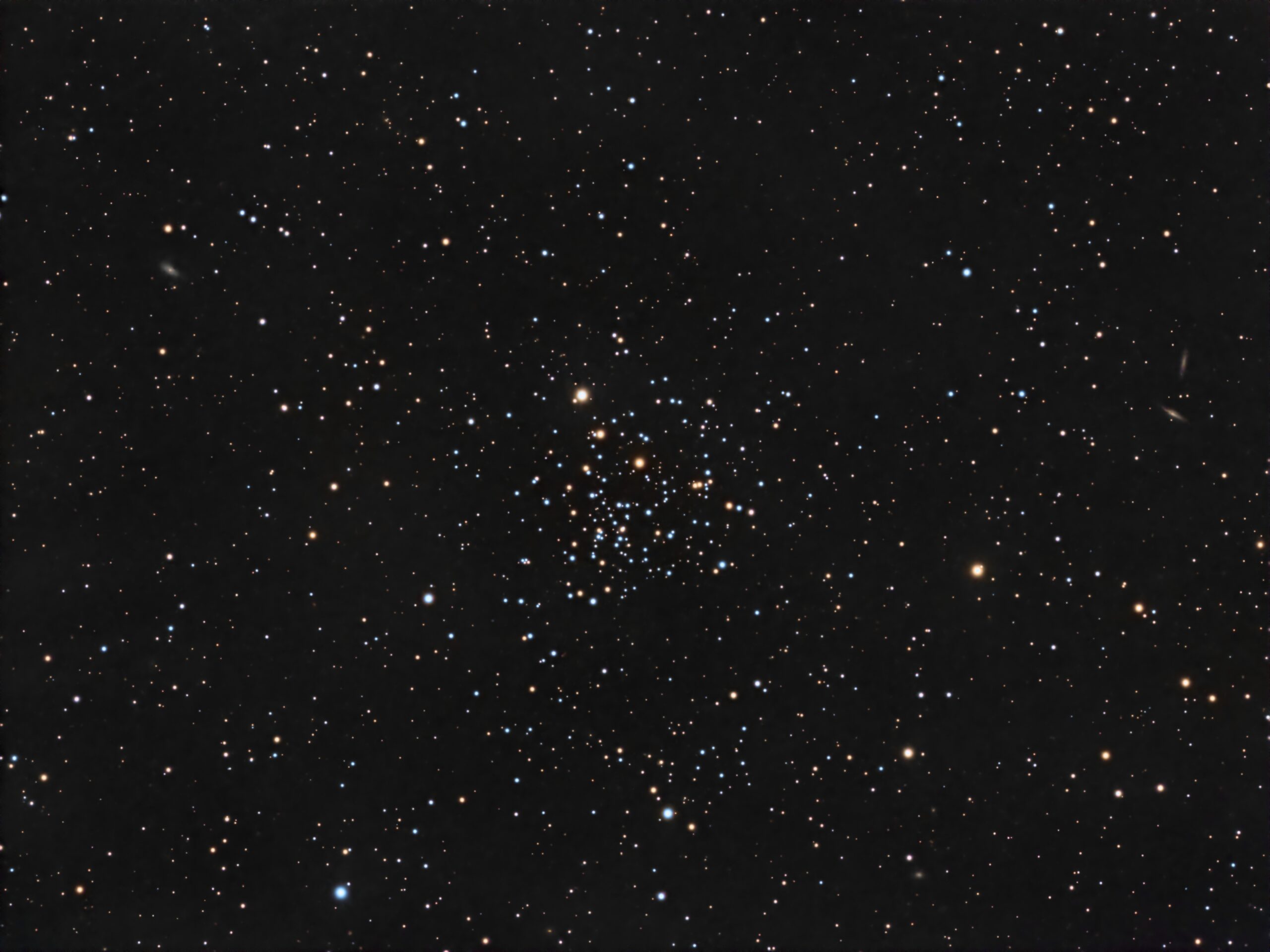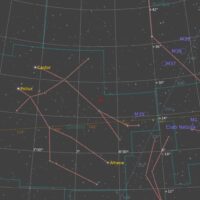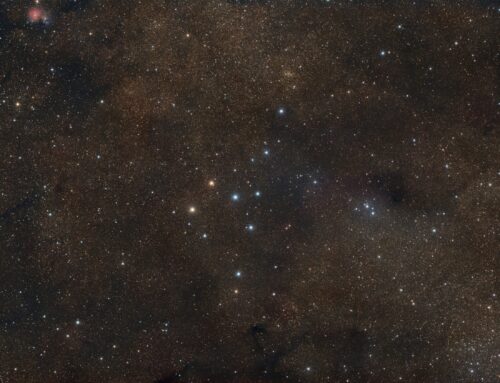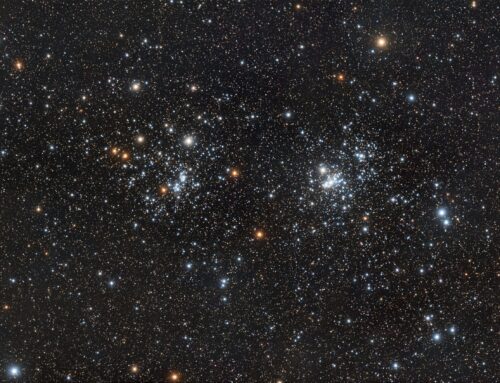NGC 2266
Click image for full size version
October 26, 2024
NGC 2266 is also catalogued as Melotte 50. It is an open cluster located in Gemini and lying about 10,603 light years from Earth. It is estimated to be a little more than 81 million years old, similar to the Hyades and Beehive clusters, though some older estimates put its age at around a billion years. It has a diameter of more than 32 light years but appears only 5′ across, or about 1/6 the width of a full Moon.
NGC 2266 looks nice in a moderately sized telescope. I see a distinct triangular shape both visually and in images. There are also a few pretty galaxies in this field that lie far in the distance. I imaged this target shortly before dawn on October 4 and 20-21, after my main target had set.
Tekkies:
Acquisition, focusing, and control of Paramount MX mount with N.I.N.A., TheSkyX. Guiding with PHD2. Primalucelab low-profile 2″ Essato focuser and ARCO rotator. Equipment control with PrimaLuce Labs Eagle 4 Pro computer. All pre-processing and processing in PixInsight. Acquired from my SkyShed in Guelph. Data acquired under moderate moonlight, good transparency and average seeing October 4-21, 2024.
Celestron 14″ EDGE HD telescope at f/11 (3,940 mm focal length) and QHY600M camera binned 2×2 with Optolong filters.
35 x 2m Red = 1hr 10m
33 x 2m Green = 1hr 06m
29 x 2m Blue = 0hr 58m
Total: 1hr 34m
Preprocessing: The WeightedBatchPreProcessing script was used to perform calibration, cosmetic correction, weighting, registration, local normalization, and integration of all frames.
RGB master: An RGB image was made from the Red, Green and Blue masters using ChannelCombination in RGB mode.
Gradient Removal: DBE was used to remove gradients from the RGB master.
Colour Calibration: ColorCalibration was used to calibrate the RGB master.
Deconvolution: BlurXterminator was applied to the RGB master with Automatic psf , star sharpening set to 0.5, and non-stellar set to 0.5.
Linear Noise Reduction: NoiseXterminator was applied to the RGB master with settings Amount=0.9 and Detail=0.15
Stretching: HistogramTransformation was applied to the RGB master to make a pleasing image. Approximate background level after stretch was 0.1.
Nonlinear Processing
Nonlinear Noise Reduction: NoiseXterminator was used to reduce noise in the background areas of the RGB master with Amount=0.9 and Detail=0.15.
Re-stretch: HistogramTransformation was used to boost contrast by moving the dark point to the toe of the histogram and slightly decreasing the mid-point slider.
Final Steps: Background and star brightness, contrast, hue, and saturation were adjusted in several iterations using CurvesTransformation with masks as required. ICCProfileTransformation (sRGB IEC61966-2.1; Relative Colorimetric with black point compensation) was applied prior to saving as a jpg. The finder chart was made using the FindingChart process.







Leave A Comment